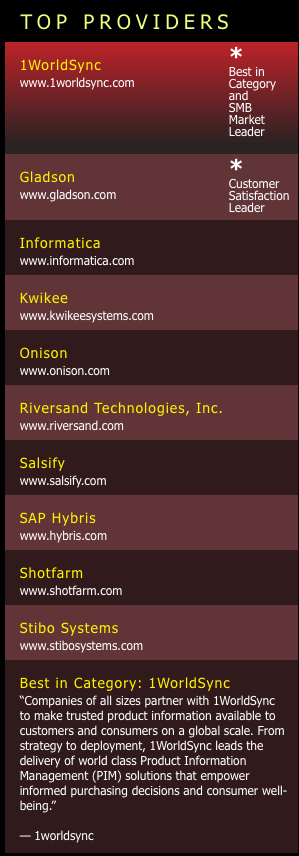2016 Readers' Choice Survey: Product Information Management
By: Sol Rashidi, Principal, Data & Analytics, Ernst & Young

The management of product information is critical to consumer goods (CG) companies more than ever. With e-commerce and e-business at its peak, and with the emergence of the IoT, consumers rely heavily on the integrity of product data and businesses need to enable the curation of product content in order to maximize their returns in an omnichannel landscape. As such, ensuring the accuracy and preserving the integrity of product data is critical to any CG organization and should be in the ‘Top 3 Agenda Items’ for any C-level executive in this industry.
While many companies understand the importance of PIM, few have done it well. Why? Most companies put forth the upfront effort into cleansing the repositories in which product information is stored, and putting in place a governance program to manage and maintain the data, however very few companies apply the rigor and have the discipline in their governance to ensure continued accuracy, timeliness, security, and cross-functional capabilities. Over time, product information environments get corroded, digital asset management initiatives become costly, and companies put forth information that they ultimately orchestrate with much labor and inefficiency.
Listed below are some of the key areas that seem to challenge CG companies when establishing their PIM competency. Master these and you’re off to a good start:
1. Know your repositories of product data, and identify which ones really matter, then apply discipline and rigor in how the data is created, managed, and syndicated. Make it a corporate commitment and asset.
2. Not all data is created equal. Identify which data really matters, then cut that list in half. Ensure you know how to manage the limited list first, and then expand. This avoids taking on too much too quick and before you’re ready.
3. Know how you’re going to define Product Master Data and make sure everyone in your organization is on the same page. Data that is important to someone or a group is not master data. There’s Global, Regional, Local, and functional master data. Know which ones you’re targeting before you start the process.
4. Please know that PIM Software will not solve your problem, but is simply an enabler. Often times, we rely on the sophistication of software to handle what our employees cannot handle. This is an incorrect approach. The business needs to own the solution, and IT can execute by using the software that’s best for you.
5. Apply rigor and discipline post go-live. Best way to do this is to connect leadership and staff performance metrics with the integrity of product data. This ensures everyone has a common interest in protecting and preserving the integrity of product data.

